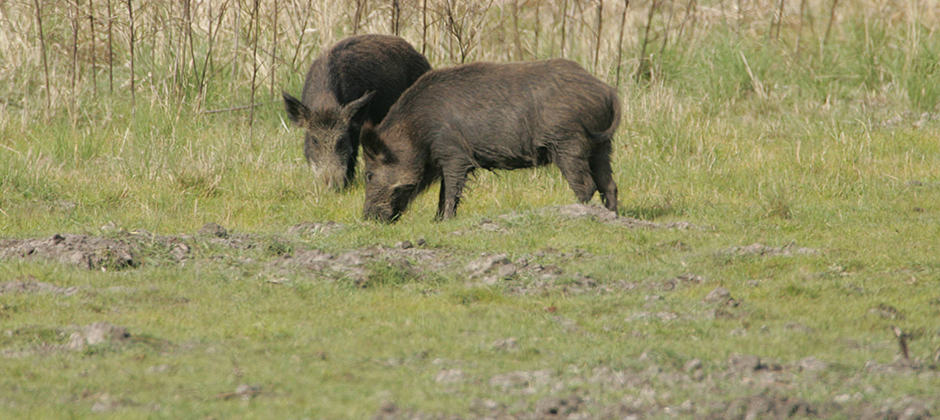Share this article
JWM: Wild pigs affect native plant life
In Michigan, small localized populations of wild pigs are disturbing native forest vegetation — altering rare plant communities and soil chemistry — at least in the short term, researchers found.
“Wild pigs are relatively new to the Michigan landscape,” said Steven Gray, who conducted the research as a graduate student at Michigan State University and is now a postdoctoral fellow at Lincoln Park Zoo. Gray led a study looking at the pigs, sometimes known as feral swine, which were first documented in the state in 1999 in the Journal of Wildlife Management.
Knowing that pigs’ rooting behavior has caused property damage and ecological consequences in the southern U.S., Gray was interested in seeing if their disturbance pose similar risks in Michigan. “Not a lot of work has been done in northern climates in the U.S., because wild pigs are localized and emerging in these areas,” he said.
The difficulty was finding the relatively small, localized populations, especially because they’re able to move long distances. “Nailing down where they resided in the state was difficult — almost like looking for a needle in a haystack,” Gray said.
The team fitted the animals with GPS collars to see where they were moving, and where researchers should explore to gauge the extent of their disturbances.
Gray and his colleagues assessed the vegetation on the forest floor, specifically looking at diversity and abundance of plants as well as the impacts of the pigs on tree species.
“The way pigs explore the world is through their nose,” he said. “It’s a great sensory organ for them. Whenever they’re moving through the landscape, if there’s no available above ground forage, they use their snout to overturn soil. Sometimes this can be really extensive, large quantities of soil.”
Gray and his colleagues found wild pig disturbance was most impactful to rarer plant communities, particularly native herbaceous plants. Areas where pigs were rooting showed lower plant species diversity. They thought they might find more exotic plants colonizing in areas disturbed by the pigs, but prevalence of exotic plants in their study was low overall.
Conducting soil chemistry analyses, they found nutrients like calcium and magnesium tended to be lower in disturbed plots, possibly because nutrients are leached as disturbed soil dries. That could cause future problems, Gray said, as these macronutrients are important for plant growth and immune systems.
“The findings here are that, if you are a land manager in a given area and you do have these rarer natural plant communities, it might be worth considering some exclusion if you are worried about emerging pig populations and their potential disturbance,” he said.
While the research shows pigs cause short-term effects on native vegetation, further research needs to explore long-term changes, especially since native plant loss could impact biodiversity and system resilience as well as other wildlife, Gray said.
This article features research that was published in a TWS peer-reviewed journal. Individual online access to all TWS journal articles is a benefit of membership. Join TWS now to read the latest in wildlife research.
Header Image:
Wild pigs, like these photographed in Texas, can damage vegetation with their rooting behavior. Researchers wanted to see their impacts on native vegetation in Michigan, where they’re more recent arrivals.
©Steve Hillebrand/USFWS








